I have used Amazon affiliate links on this page. As an Amazon Associate, I earn a commission from qualifying purchases at no added cost to you. Thank you!

Table of Contents
Introduction to Red Koi
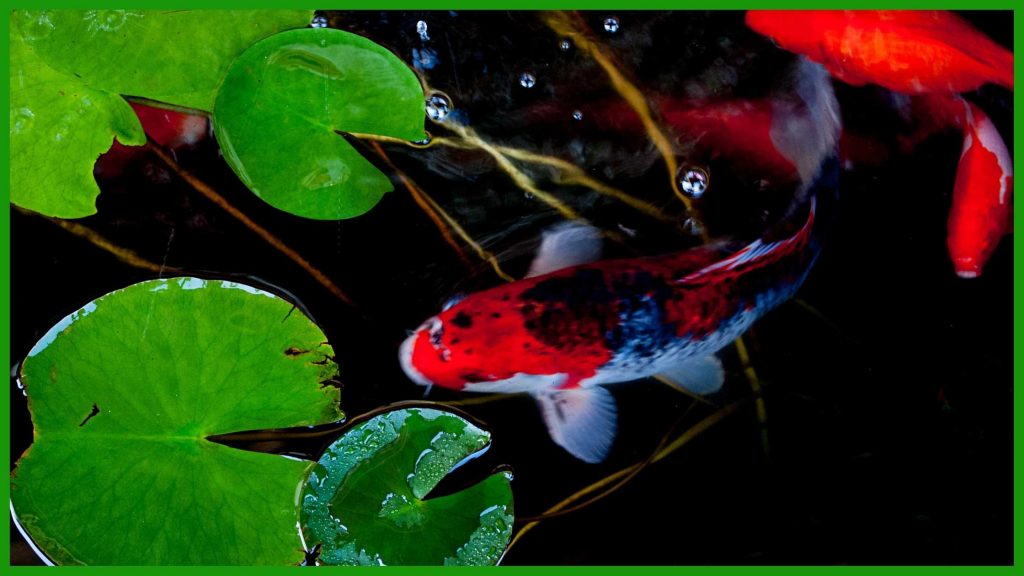
People love bright red koi and for good reason. They add a lot of energy, and contrast to the pond. As the one of most popular color of koi, red is an essential fish color to master if aspiring Koi keepers want to breed their own fish. Like yellow koi, red koi are also very popular in Japan and USA. They are highly prized by collectors.
Koi are an incredibly diverse species, with a wide range of color and pattern combinations that vary from variety to variety. Although most hobbyists believe that red koi begin their lives as a normal red colored fish, this is often not the case in fact, the opposite is actually true. Along with diet, genetics and water conditions, environment can play a huge role in the resulting color and patterns at the end of a fish’s life.
Koi fish with dominant red colorations are often called as Aka Koi in the hobby. Aka Koi are found in several koi breeds. We will get into these different variants later in this article.
What is a Koi Fish?
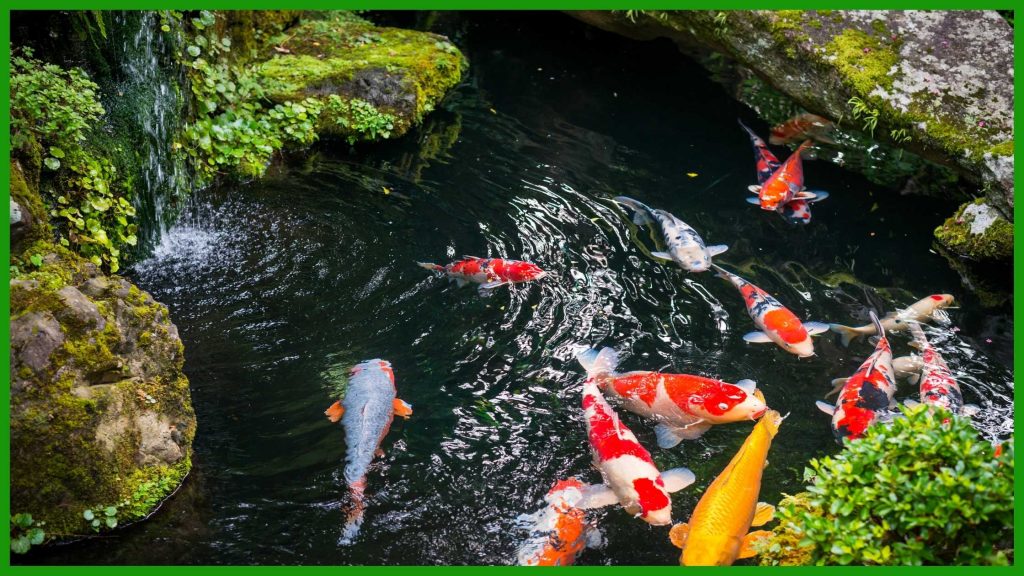
Koi fish are simply domesticated carp bred in captivity for a long time. They can grow up to anywhere between 20 to 50 inches in length. They are sometimes called “Japanese carp.”
Simply, Koi are the domesticated version of common carp (Cyprinus carpio).
They are one of the oldest domesticated fish in the world. And to this day they remain one of the most popular fish in the aquarium trade.
Yes, Koi have been around for thousands of years. Did you know that modern koi carp breeding practices actually originated in Japan and China around 4th century? Through mtDNA sequencing, researchers were able to discover that common or koi carp originated in East Asia, a commonly held belief!
Koi With Different Colors Vs Their Personalities
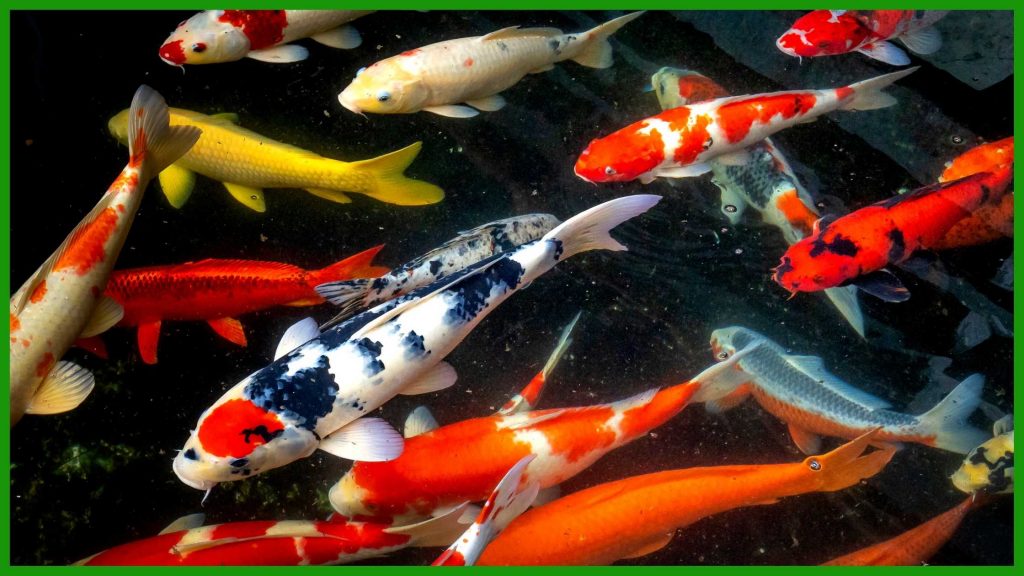
These fish are a popular choice for aquariums and ponds, as they have a rich history in Japanese culture. They have been bred for centuries to create different colors, types, and patterns. The color of a particular koi is determined by the type of genetic mutation that occurred during its early development. It is a common misconception that a koi’s color determines its personality or other characteristics. In truth, these long-lived fish can be playful or aggressive, moody or docile. Due diligence is needed when choosing a red colored koi for your pond, and Proper caretaking is essential for their health and happiness, which is why we’ve written this red koi guide.
How to make a Koi a beautiful red colored fish?
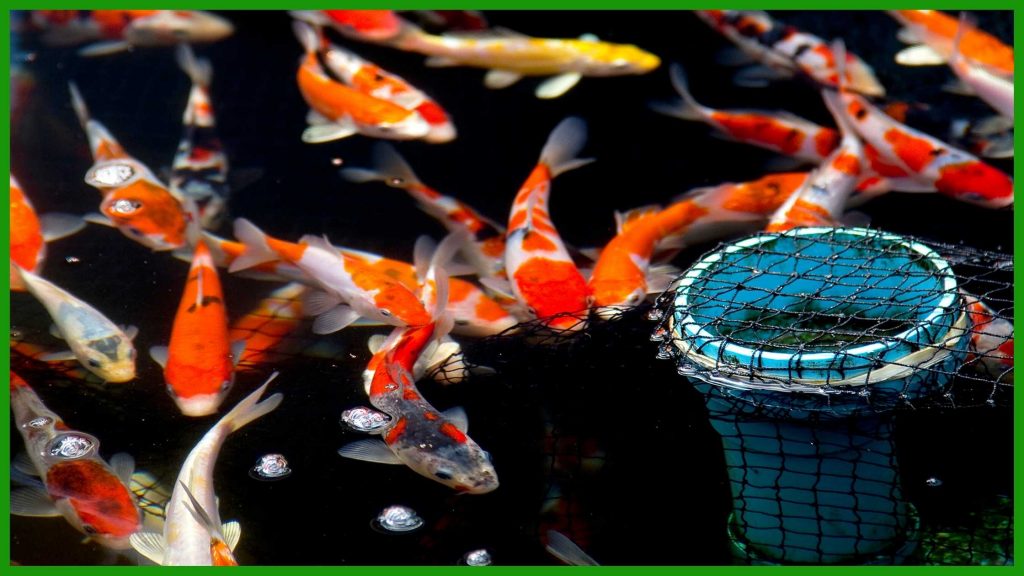
The truth is that developing a red Koi takes work and observation. You must know what your koi eats, where it comes from, the proper temperature and water conditions, the right light sources, and many other factors that can affect its color. Some people find it next to impossible to develop their red Koi fish as they want, so they simply buy red koi, both juveniles and mature ones, thinking they are getting a better deal.
It’s not scientifically proven that how temperature plays a role in red color in koi. But almost every koi farmer maintains specific temperature ranges for their different koi breeds. And they will assure you that temperature is a crucial factor of determine the intensity of a koi fish color.
Colder water temperatures ranging from 13° C to 26° C tend to give a darker red coloration for Showa, Sanke and Kohaku varients. When kept in warmer conditions they turn in to more orangish red colors.
To become a good koi owner, you must understand the both science and traditional knowledge behind their color profile. The first stage of a koi’s life has a big impact on its coloring and patterning. Noneof the red koi doesn’t start it’s life as a red colored fish… As a fry they look really boring. But the genetics are in their bodies hidden to be revealed. A koi’s colors are created in the skin and then transferred to the scales; therefore, the colors must be present genetically in order for a koi to shine at a latter age of their lives. The growth process of scales is not an easy process as scales grow from skin cells, pigment collects at the base of the scale.
What Koi Fish are considered as Red Koi?
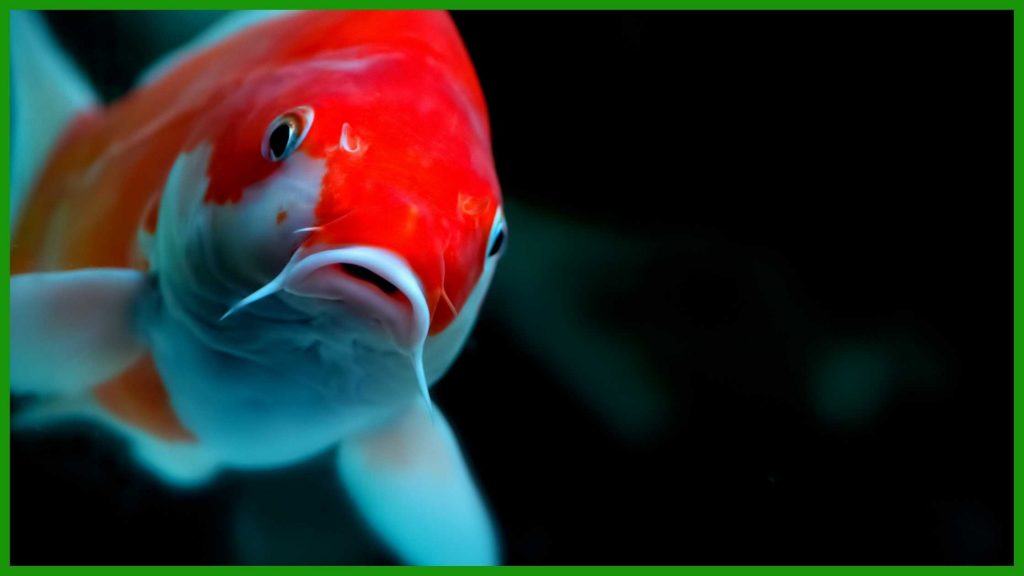
Red koi fish are not a specific breed. Rather, they are simply koi fish under any Koi variant that have red pigments in their scales. In fact Koi fish can be any color, but many people choose to keep red ones because of their beauty.
Yes, Aka Koi or Red Koi are special fish with a mystical history and beautiful color. As their juveniles grow, they change into bright colors and patterns. This makes them exceptional hard to find and collect, and very expensive. In fact the most expensive Koi sold for 1.8$ was a Red Koi too.
Different varieties of Red Koi have different color intensities, patterns and other associated less dominant colors like whit and black. But almost all of them start out as yellow, orange or black before they turn into red koi as they matures.
Now let’s take a look into different red koi varieties in detail.
Hi Utsuri
Hi Utsuri and Ki Utsuri Koi are a black koi with beautiful, bright red accents. The red reflection of Hi Utsuri is more noticeable due to the black base. With the added, identifiable black striping on their fins Hi Utsuri can be quite impressive. Both Hi Utsuri and Ki Utsuri Koi became established in 1924. The name “Hi Utsuri” literally translates in to “red reflection”. If you want a red koi, then a Hi Utsuri is a perfect choice!
Hi Showa (Red Showa)
Please note that a showa can be often mistaken for a sanke. When an observer views a Hi Showa koi, the fish should be predominately red, hence it becomes a perfect candidate for a red koi. The red coloration should be interspersed with spots of black. This black coloration should not completely smother the red, and it should be less than the dominant red.
If you’re looking to buy Hi Showa Koi, remember that the red patches should all be interconnected, like large islands.
There shouldn’t be any white coloration, though a tiny amount is accepted for a Hi Showa.
Sanke Red Koi
Sanke koi fish, like Kohaku koi fish, are crosses between two different species. The first parent is a red-colored variety of the common carp. The other adult stock should be a white-colored variety of the same species. The resulting hybrid offspring will grow, physically, to resemble both of its parents. This leads to three distinct color variations in Sanke koi fish: white; white with red markings; and black with red markings.
Aka Matsuba
Matsuba koi are known for their distinctive pattern: metallic, solid colors shading into a black pinecone pattern over the entire body. Matsuba varieties display a range of colors on top of the pinecone pattern, but no matter how colorful they are, all Matsuba share that single defining pattern.
When a Matsuba has a red base color over the black pinecone pattern we call it a Aka Matsuba. It’s a popular red koi variety which is also very expensive.
Kohaku Red Koi
Kohaku koi, the red and white colored fish that most people recognize, start off as pale orangish-pink fish with no distinguishing marks or pattern. At an early point in their development, they begin to see their orangish color break up into a pattern of dark red and white.
“S.Legend” or “Sarasi” for an example is Kohaku Red koi with bright red patterns over a white background colored skin. It became the world’s most expensive koi fish sold for 1.8 million dollars at at the “All Japan Koi Show”. “S.Legend” was 9 years old when it was sold for this record breaking price.
Aka Hajiro
Hajiro Kois are typically black koi fish with white being only on the tips of the pectoral and tail fins. When a Hajiro is red instead of being black in color we call it a red Hajiro, Aka Hajiro or a Red Ogon Koi. I know it’s confusing to have several names for a same fish, but that’s how Kois are. They tend to have several names for the same fish.
Aka Hajiro are true red koi fish, as they have a lot more red color throughout their bodies than other red koi varieties.
How to Choose a Young Red Koi
You should know that young Koi that are few months old shouldn’t have bright colors. Naturally these young fish are pale in colors and have no bright red bodies. It takes at least a year or more (this can be quite vary for the different breeds) for the Koi to get their bright vibrant colors. This is true about Red Koi fish as well.
Hence, if you spot very young Koi fish with bright red colors, you shouldn’t probably buy them. These young fish are color fed to have these bright red colors, hence they will lose them quite fast as they mature. Chances are they will probably turn into orange or pale red colors.
Therefore, buy young koi from a reputed and trustworthy breeder, with a record of their parents and heredity to make sure they will turn into real red Koi fish. Most of the time the true Red Koi fry aren’t red in color. They look very uninteresting and boring. But they will turn into magnificent red colored Koi fish when matured.
Red Koi Fish Care
The volume of the pond
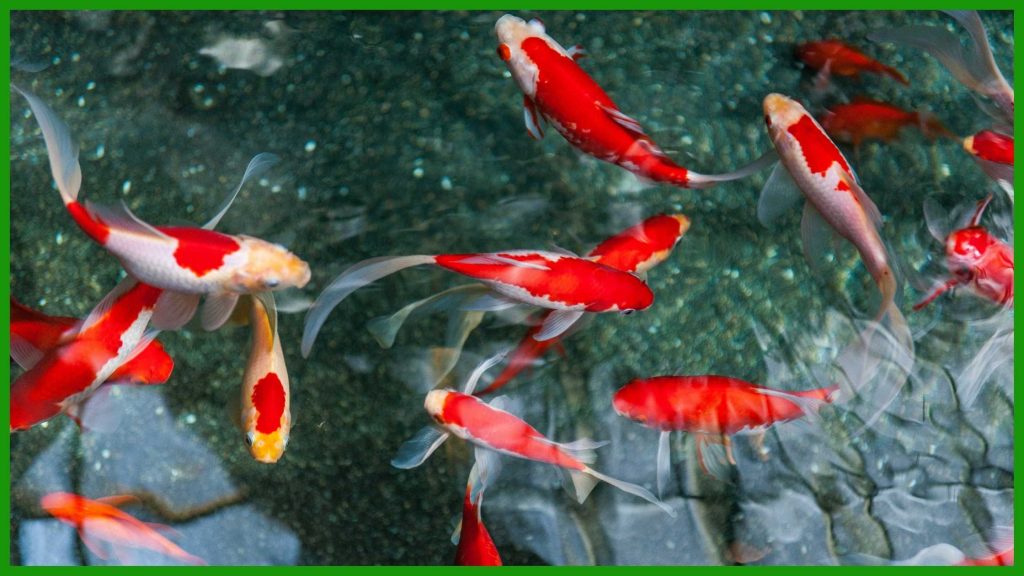
The most important consideration for koi owners is to choose a fish that is appropriate for the water type. Koi need a large body of warm water to swim in order to maintain their temperature and they need a filter system to keep the water clean. For example, red koi fish require at least an 800-liters with a filter system. The temperature of the water should also be monitored closely, as it can affect how your fish moves around.
Water Quality
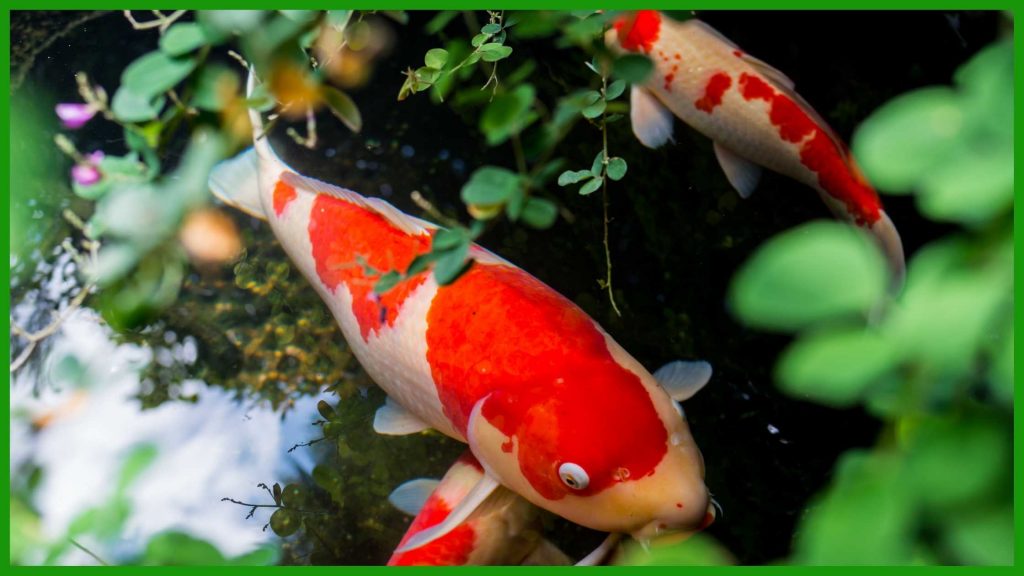
One of the best ways to keep your red koi fish healthy is to maintain proper water quality. If the water becomes too polluted, it can have negative effects on their health. One sign of bad water quality is a lack of oxygen in the water. The koi will usually swim near the surface or the bottom of the pond looking for more oxygenated water, which can be a sign that they aren’t getting enough dissolved oxygen in their habitat. This means that you’ll need to do more frequent water changes and use appropriate filters to prevent this from happening.
A proper and healthy diet
Just like other breeds, red koi are omnivores, which means they will eat a variety of foods. They can also act as an indicator of the water quality in your pond. And you want to keep that quality as high as possible. We recommend a daily feeding schedule. Daily food rations should be divided into two meals a day at maximum, though once a day is recommended. Your Koi should consume the entire portion in one sitting, though they may rest a while after eating.
Duckweed can be a great addition to your koi pond as it will give an additional protein rich food source. Apart from being a food source, a properly managed Duckweed colony can act as a natural filter and a natural habitat.
Feeding the red koi just like a Japanese Koi Pro!
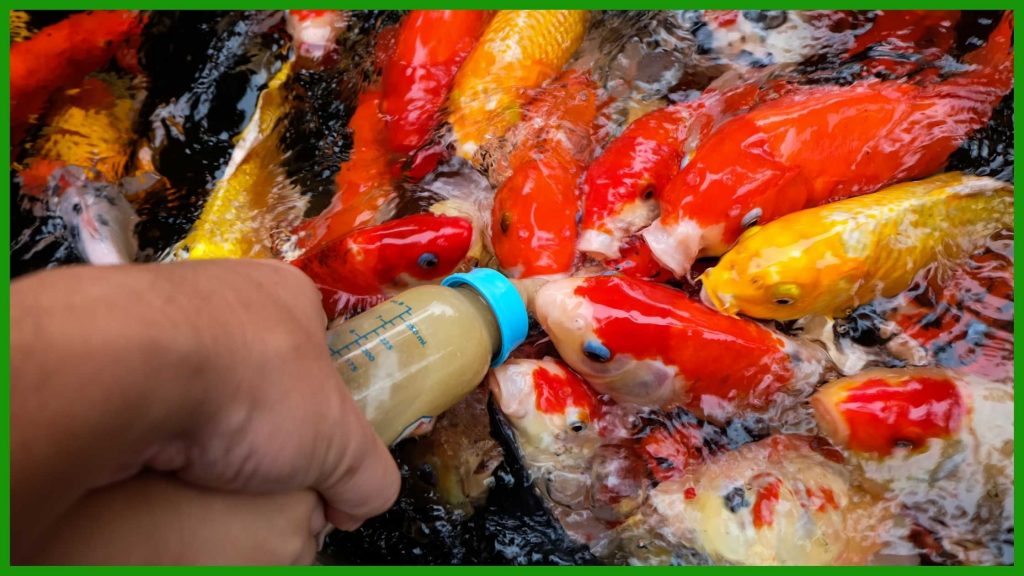
There are high quality and healthy koi food out there in the market. These can ensure that your red koi is getting the enough nutrients for their daily intake. Hence, stay healthy and beautiful with a longer lifespan.
Check out the following koi food that you can buy online.
If you are a busy individual, you may buy a automatic koi fish feeder to program and automate your daily koi feeding.
Apart from this base diet, you can occasionally feed your fish with pieces of fruits like watermelon, and oranges. But make sure to scoop out any residuals after the feeding is done.
Koi Fish Diseases

An often overlooked area of koi care is disease prevention. Koi are susceptible to several diseases, including carp pox, flukes, tumors, bloat and so on.
The best way to prevent disease is by avoiding overcrowding and overfeeding. Crowded conditions lead to stress and injuries that can contribute to the development of infection or other diseases. It’s important for any koi keeper to have a solid understanding of the needs of their particular fish. For example, some koi are more vulnerable to certain types of disease than others. This is why it’s important to know the specifics of your red koi fish’s needs before acquiring one.
Make it a habit to check your pond water parameters, and clean your filter in time. Koi are messy feeders and they produce a lots of waste which can turn your pond water bad overnight!
Moreover, you should quarantine any new koi fish arrivals. New fish can carry dangerous pathogens and easily introduce them to your otherwise healthy fish. At least two weeks of a quarantine period is required. You may add healthy amount of antibacterial medications like Melafix if you suspect the new fish are showing early signs of bacterial infections.
Conclusion
A happy, healthy fish is a reward of itself. But the feeling of accomplishment you get from watching your red koi grow and thrive is even more special. To make sure you get the most out of your koi fish, follow the following tips concluded from this article; starting from selecting the right red koi fish to caring for them, maintaining their water conditions, and knowing when they’re sick. The bottom line is that you shouldn’t lose your focus on caring your fish. Your koi do need your attention all the time.
